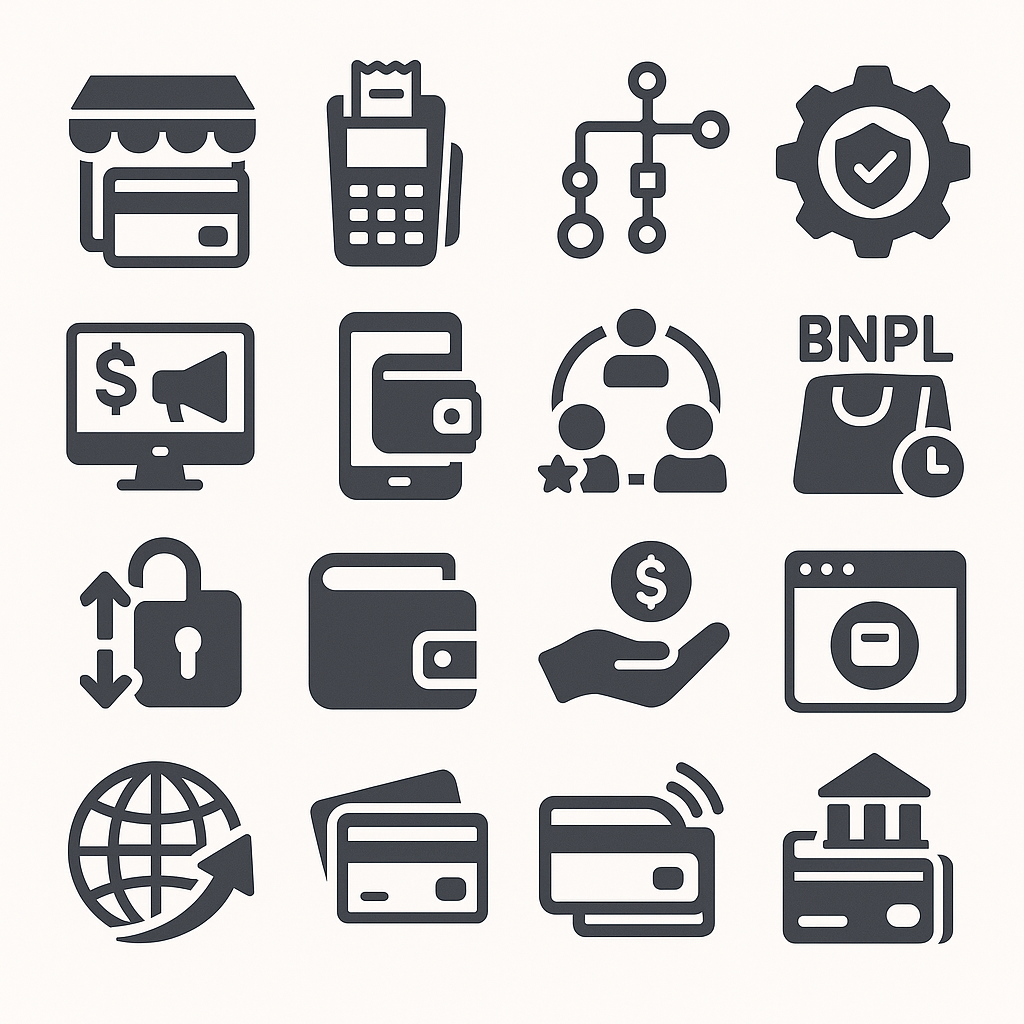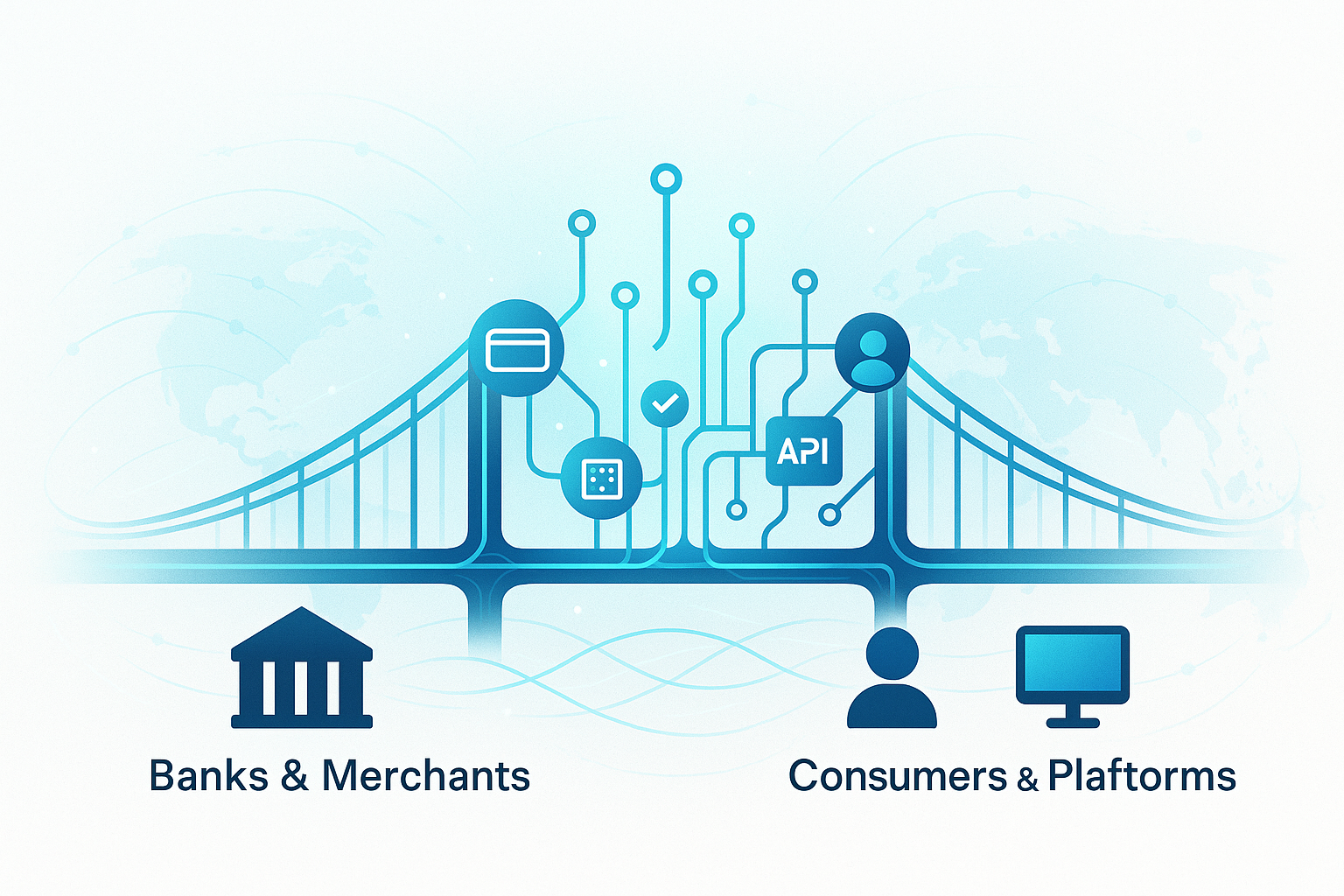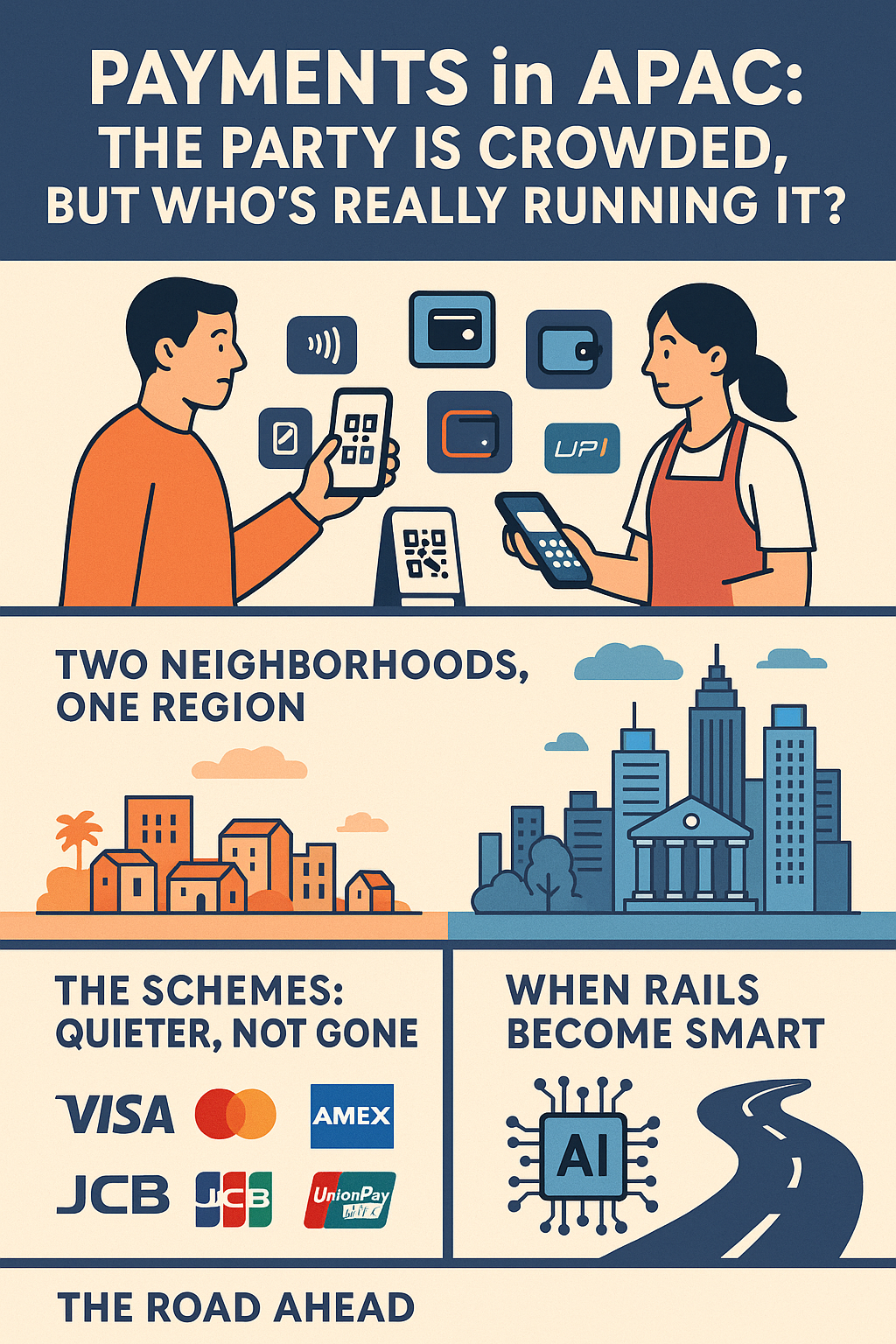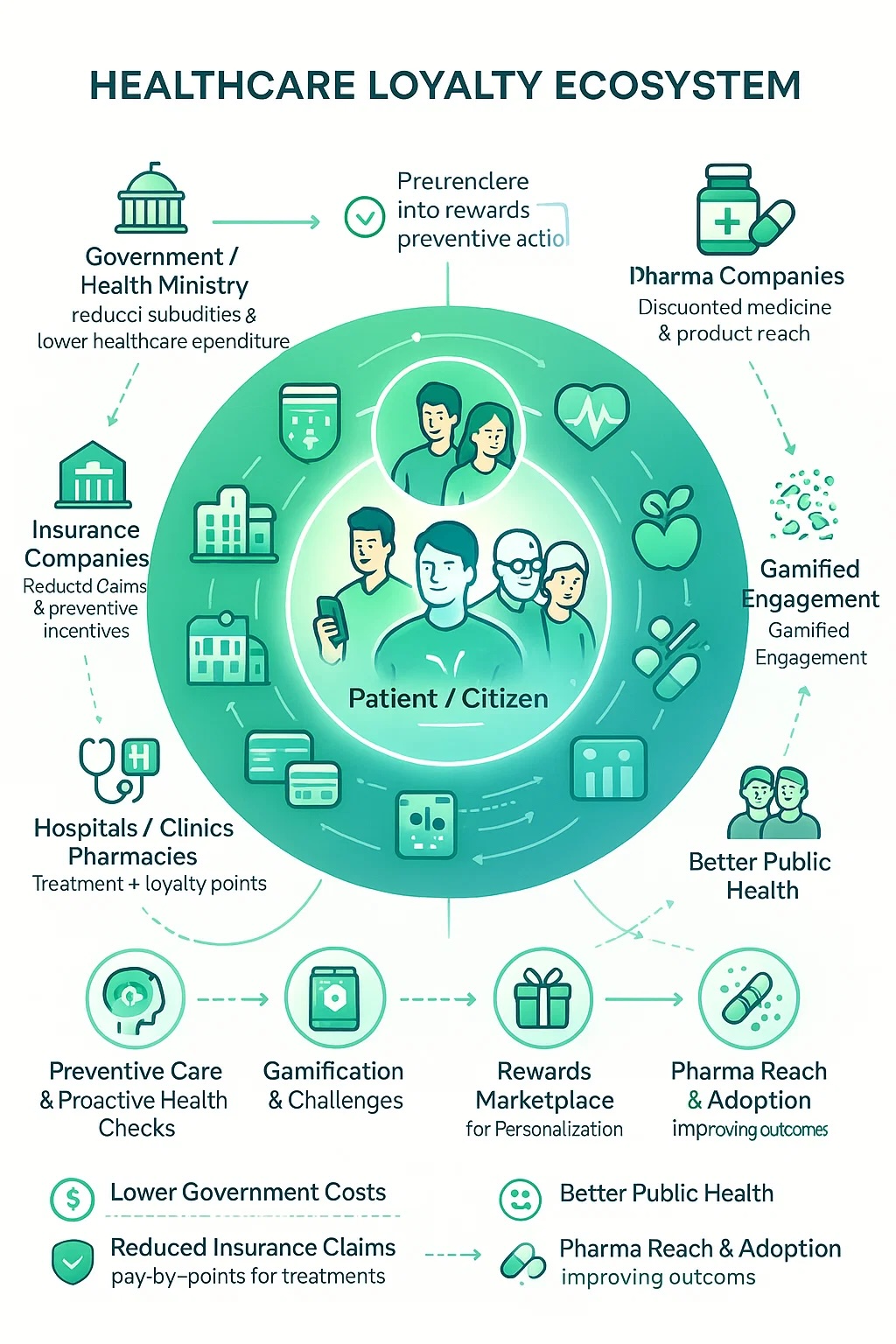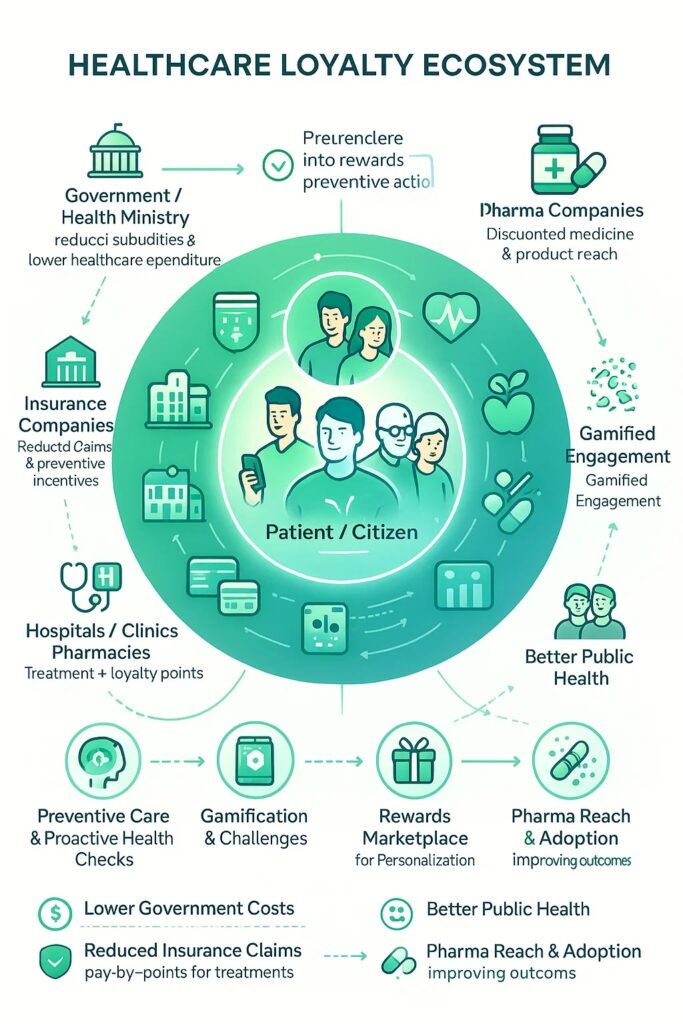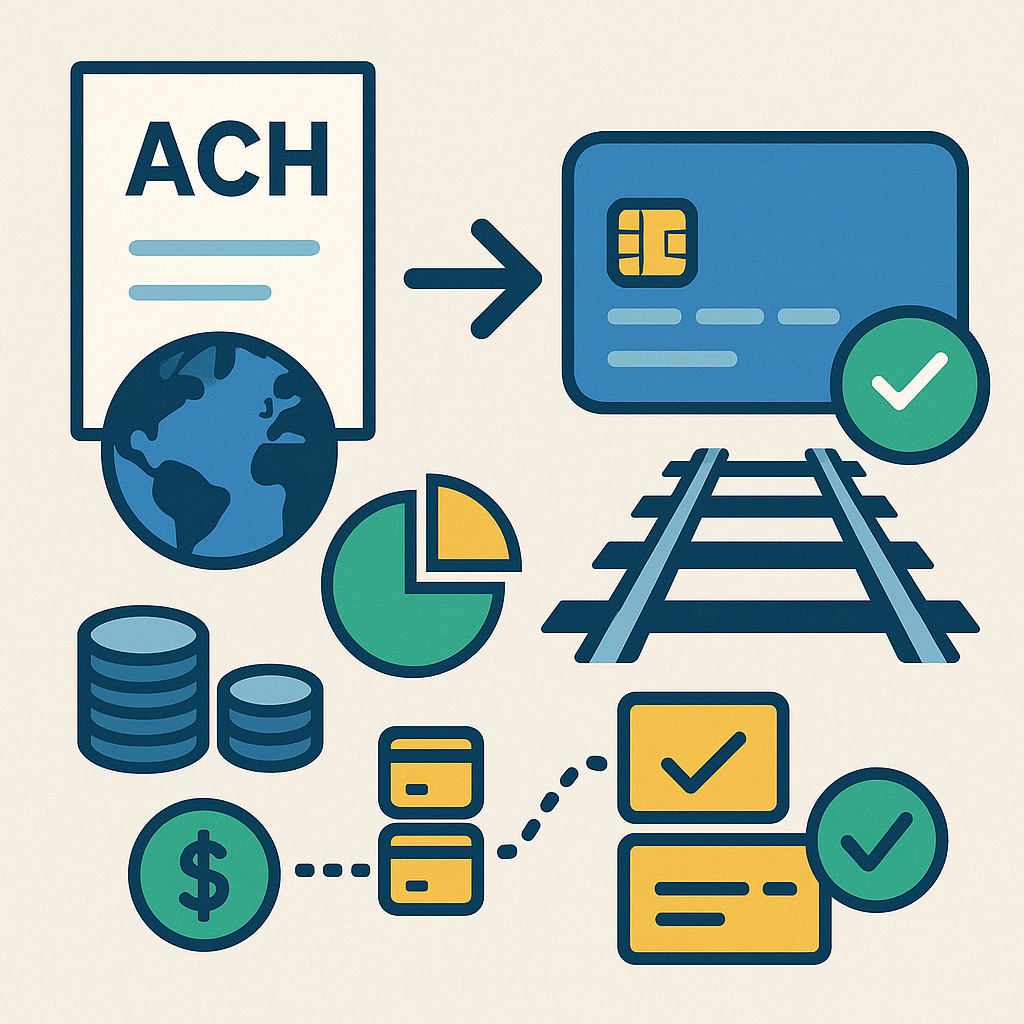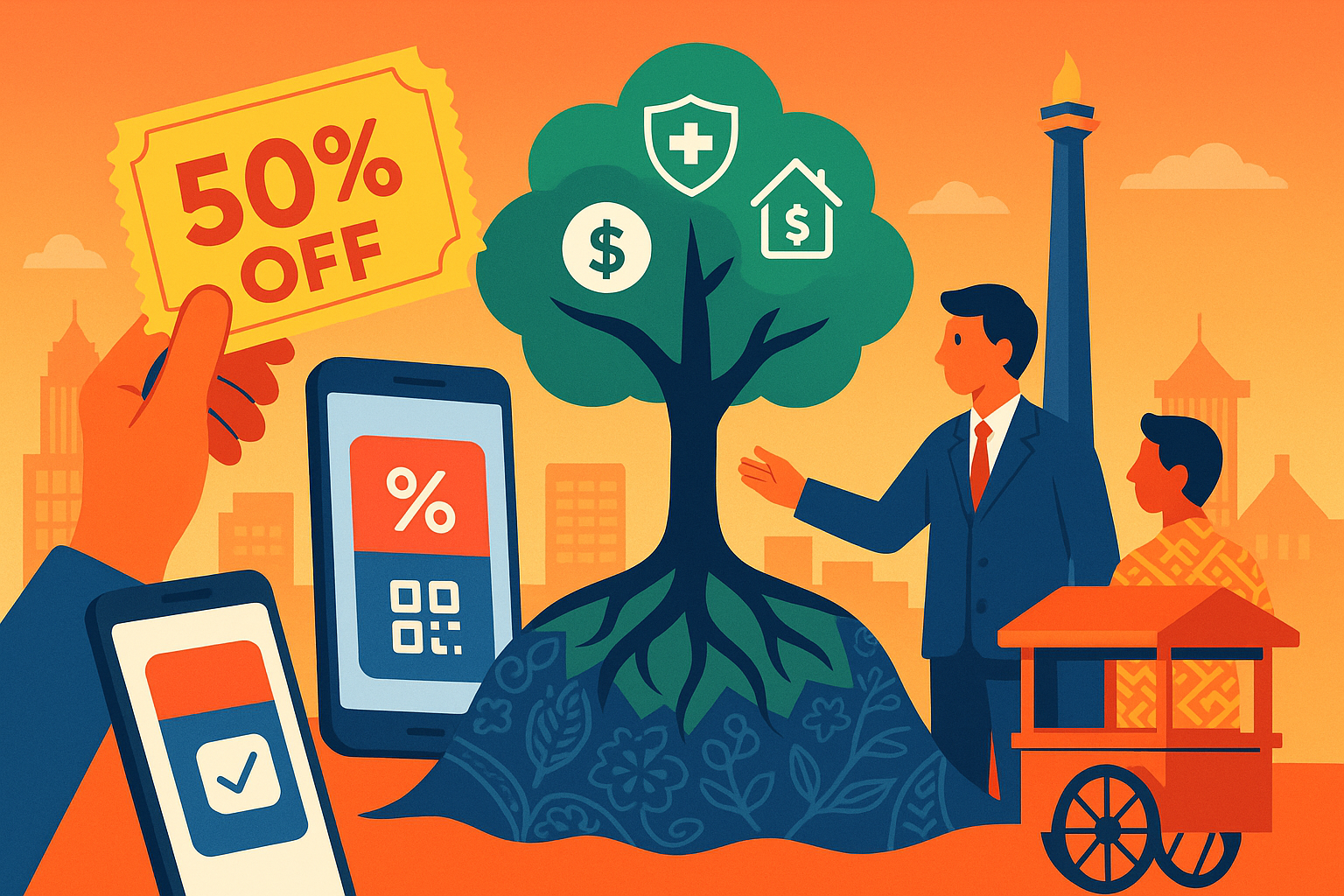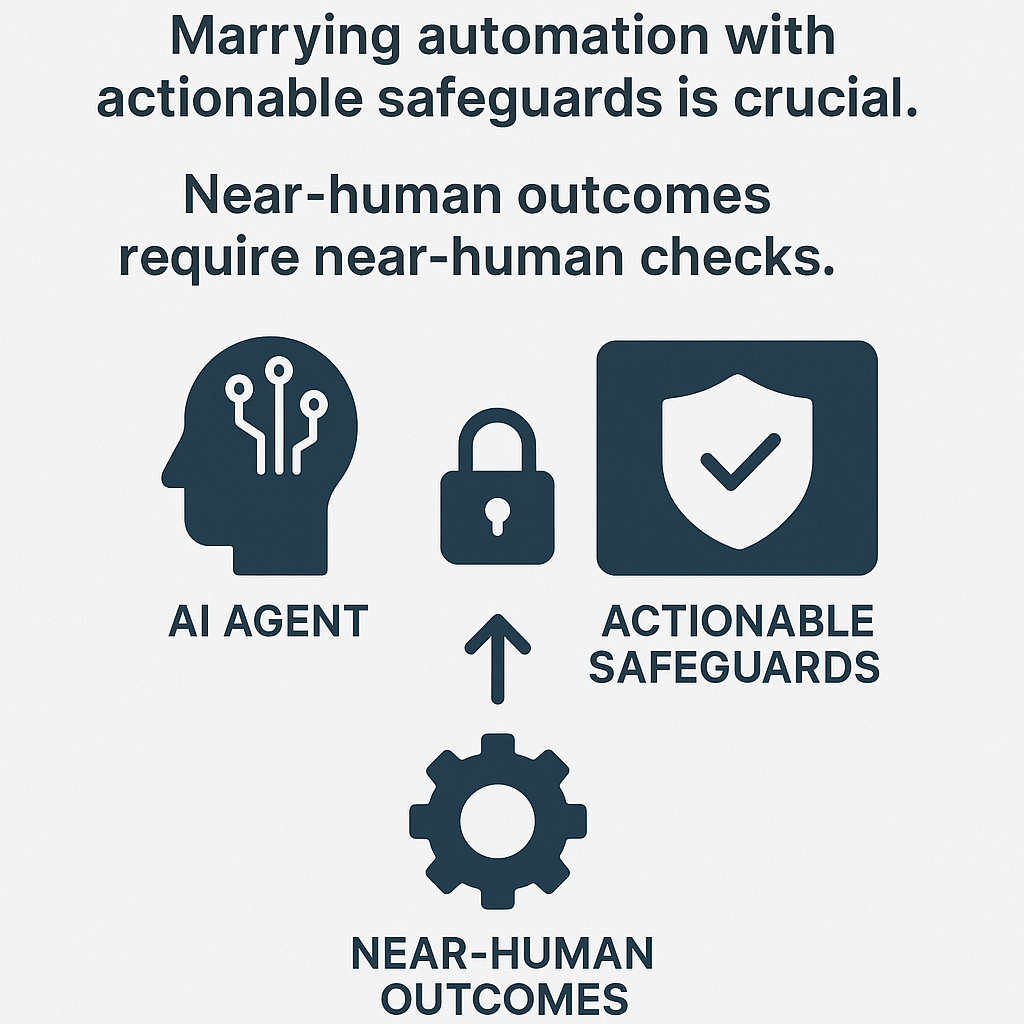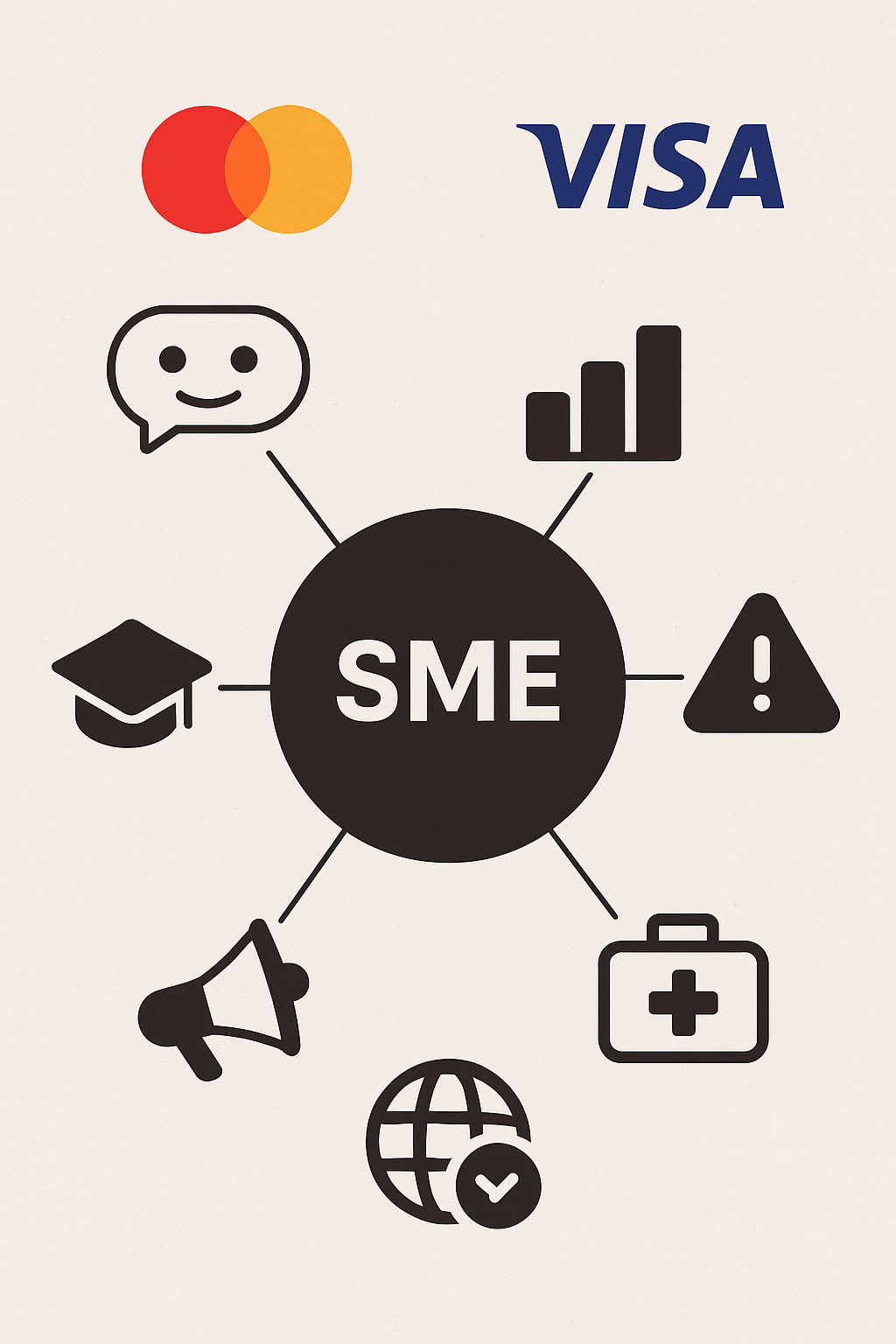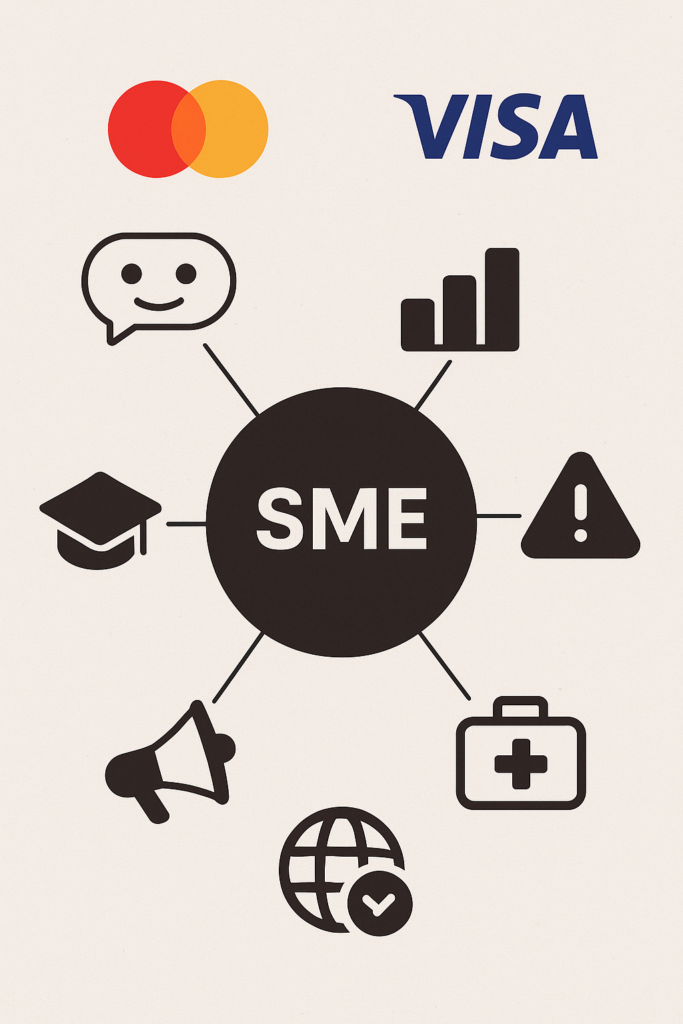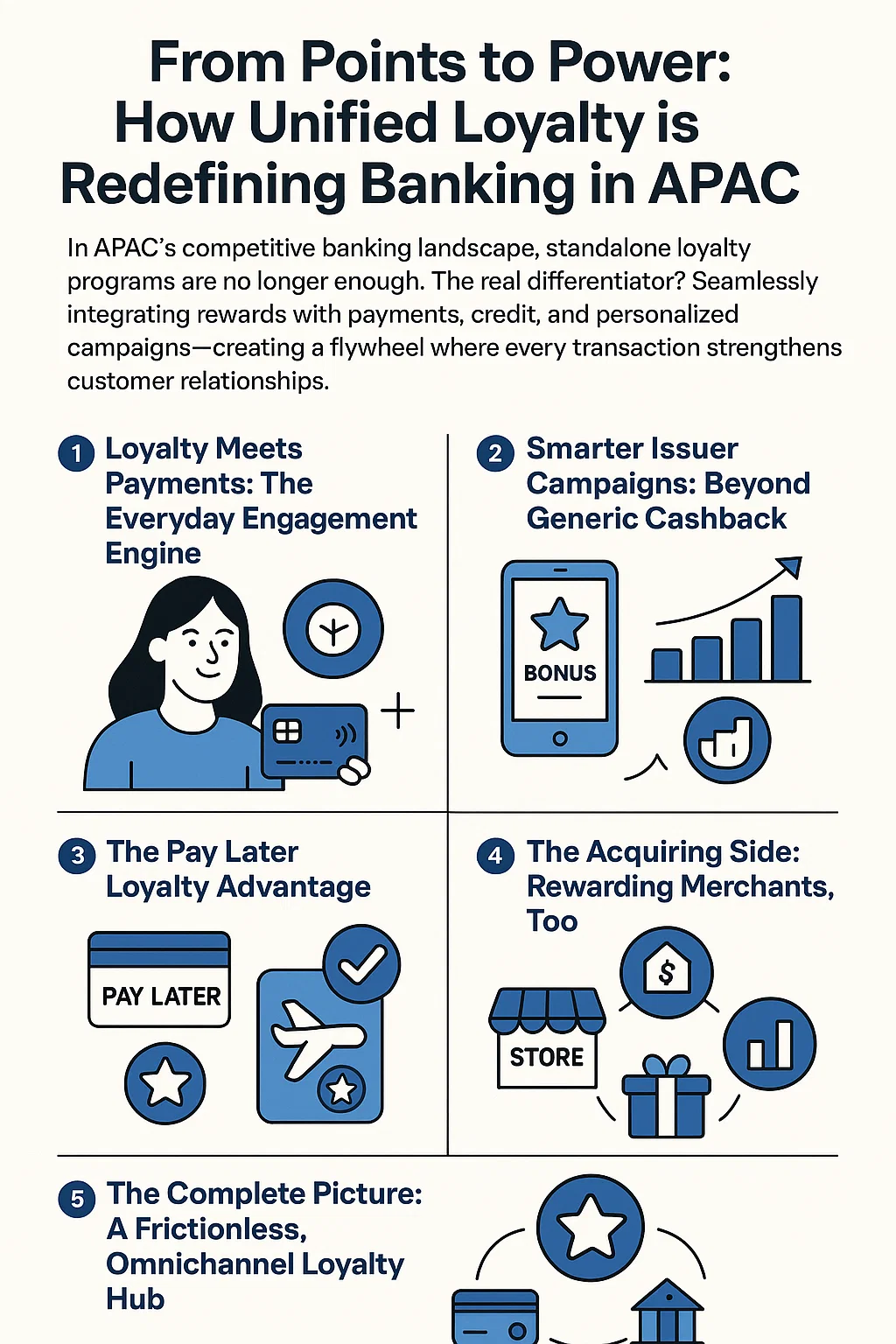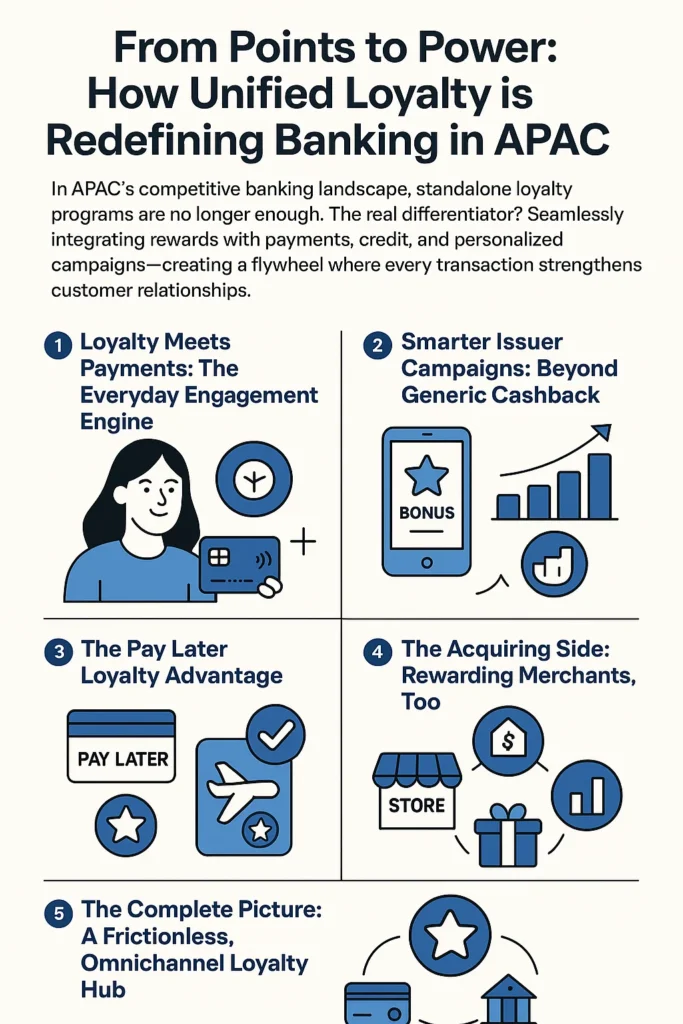If you’re building, selling, or moving money in Asia-Pacific, you know the feeling. The payments stack has never been more powerful, yet the experience has never felt more… patchwork.
We’ve built towering skyscrapers of financial technology, but they’re connected by rickety rope bridges. The incumbents? They own the foundations—unbeatable on coverage and compliance. But value is leaking from the seams between them: in clunky cross-border journeys, in data trapped in silos, in loyalty programs that frustrate more than they delight.
This isn’t just a problem. It’s an opportunity. But for a new player, the only way in is not with a bigger hammer, but with a smarter needle and the right thread.
Act I: The Lay of the Land – A Kingdom of Powerful, Isolated Castles
Picture the APAC payments landscape not as a single stack, but as a continent of formidable, walled cities.
- The Gateways & Acquirers are the well-maintained main roads in mature markets. They’re reliable, but the real battle for supremacy is now in the alleys and side streets—the quality of local payment methods, the speed of settlement, the strength of tokenization.
- The PayFacs are the express lanes, getting merchants to market at lightning speed. But the toll booth—onboarding and risk—is still manned by humans in too many places, creating frustrating bottlenecks for SMEs.
- The Orchestrators are the air traffic control towers. They’re brilliant at routing payments between different providers, but most only track the “planes” (transactions). Few have a unified view of the “weather” (fraud), the “passenger loyalty” (offers), and the “airport security” (identity).
- Loyalty & Campaigns are the bustling, disconnected marketplaces. Issuers, merchants, and wallets all run their own bazaars with different currencies. The experience of cashing in your loyalty points at a physical store versus an app is a roll of the dice.
The kingdoms are powerful, but they don’t talk to each other. And in the gaps between them, merchant and customer frustration grows.
Act II: The Pain Points – Where the Cracks Become Canyons
This fragmentation isn’t just an architectural debate; it’s a daily operational headache. It shows up as:
- A cross-border payment that feels anything but seamless for the merchant and the end-user.
- A small business owner waiting days for underwriting when alternative data could grant them instant, safe access to capital.
- A marketing team unable to tie a coupon redemption to a purchase history, missing the chance to create a truly valuable customer moment.
- A CFO squinting at a statement, unable to decipher the true cost-to-accept or the ROI on their value-added services.
The market isn’t asking for another pretty dashboard. It’s asking for a translator, a connector, a unifier.
Act III: The Blueprint – Becoming the Region’s Master Weaver
So, is there room for a new player? Absolutely. But the winning profile isn’t “another PSP.” It’s a Sidecar Growth Layer.
Imagine a platform that doesn’t try to rip and replace the existing rails but sits gracefully on top of them. It weaves them together with a single, intelligent rules engine that orchestrates not just payments, but also loyalty, installments, and identity. It makes the entire financial ecosystem smarter, not just faster.
The Wedges to Force Entry:
- The Bank’s New Arm: Become a Bank-Partnered PayFac. Offer banks and large merchants instant onboarding, sophisticated fraud controls, and funds management as a service. Share the economics; respect their balance sheet and compliance legacy.
- The Vertical Visionary: Pick a complex industry—like travel, healthcare, or marketplaces—and build its Operating System. Ship payments, financing, and loyalty as one seamless kit that solves the whole workflow, not just the transaction.
- The Borderless Bridge: Create a Cross-border Commerce Fabric that makes international payments feel domestic. Use smart local-method routing and transparent FX, and price your value on the uplift you create, not just the volume you process.
The Table Stakes: Without these, you don’t even get a seat at the table in Singapore or Sydney: impeccable security (PCI L1, ISO 27001), proactive regulatory alignment (MAS, etc.), and crystal-clear data governance.
Act IV: The Journey – A Map, Not a Mandate
You can’t conquer APAC all at once. You must respect its intricate tapestry of maturity.
- Stage 1 (Singapore, India): The Sophisticates
- The Play: Lead with hard numbers. Your “sidecar” must prove in a 60-90 day pilot that it lifts authorization rates and slashes costs. Partner with banks for credibility and win a lighthouse enterprise to build your case study. Sell quantified uplift.
- Stage 2 (Malaysia, Thailand, Australia): The Pragmatists
- The Play: Bundle a “PayFac-lite” offering with instant onboarding, and tie it to a loyalty wallet that works everywhere. Land a flagship partnership with a bank and a major retailer. Price with a clear, undeniable ROI model.
- Stage 3 (Indonesia, Philippines): The Builders
- The Play: Lead with your Vertical OS. Solve the entire messy flow for a marketplace or a telco—KYC, escrow, payouts, loyalty. Assemble a field-integration team to handle the last-mile work with local PSPs and wallets. Earn trust by solving acute pain.
The Final Word: The Invitation
APAC doesn’t crown the loudest player. It rewards the most thoughtful operator—the one who respects local rails, fixes the day-to-day pains, and makes everyone else in the value chain look good.
Be the quiet layer that improves outcomes for acquirers, banks, and merchants alike. If you can show a CFO a chart that goes up and to the right within the first quarter, you won’t just win a contract.
You’ll get invited to the Christmas party. And in APAC, that’s when you know you’ve truly arrived.
